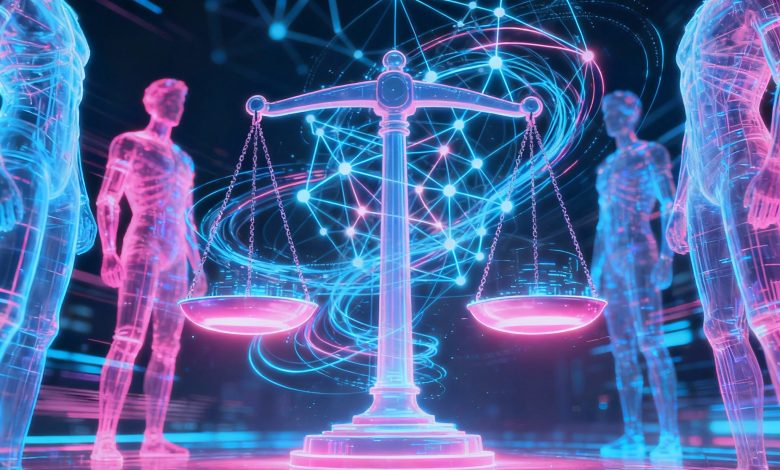
We stand at an inflection point in the AI industry. There is an incredible effort to integrate large language models into everything: healthcare diagnostics, hiring pipelines, credit approval systems, and criminal justice risk assessments. Yet amid the excitement about AI’s capabilities, two critical issues remain dangerously underaddressed: fairness and interpretability. These aren’t merely technical nice-to-haves or ethical luxuries we can defer to a “later day.” They are foundational requirements for responsible AI deployment, and our window to get them right is rapidly closing.
The Fairness Crisis: A Ticking Time Bomb
When we talk about fairness in AI, we’re not discussing abstract philosophical concepts, we’re addressing concrete harms that are already manifesting across society. AI systems trained on historical data inevitably learn and amplify the biases embedded within that data: biases against women, people of color, LGBTQ+ individuals, and socioeconomically disadvantaged communities. The mathematics of ML don’t distinguish between correlation and causation, between legitimate patterns and discriminatory ones.
Consider the implications: recent research into socioeconomic bias in large language models reveals that these systems systematically associate poverty with negative attributes and wealth with positive ones. Various models seem to have learned, through exposure to countless texts, that certain zip codes, educational institutions, and even names correlate with “success,” without understanding the structural barriers that created these patterns. What happens when these models are integrated into criminal justice systems or hiring tools unchecked?
The danger intensifies because AI bias operates at scale and speed that human bias never could. For example, a prejudiced hiring manager might discriminate against dozens of candidates; a biased AI system can process millions of applications, systematically excluding qualified candidates from underrepresented groups before any human ever reviews them. And unlike human decision-makers who might reconsider or be held accountable, these systems operate with an aura of objectivity that makes their decisions harder to question.
Gender bias presents another stark example. Research on multimodal models has shown that AI systems generate and perpetuate harmful stereotypes: from associating women with domestic roles to reinforcing occupational segregation. Multiple experiments have found that these models tend to generate images of doctors, lawyers and CEOs as males, and nurses, assistants and teachers as female. What happens when a young girl interacts with an AI tutor that consistently portrays such biases?
If these models are integrated into educational platforms, content generation tools, or virtual assistants in their current state, they won’t just reflect societal biases; they will actively teach them to the next generation.
Yet, despite mounting evidence of these harms, fairness often remains a secondary consideration in AI development. Companies rush to deploy models that achieve impressive benchmark performance, deferring fairness audits and bias mitigation until “after launch” or “in the next iteration.” This approach treats fairness as an Optimisation problem to be solved incrementally, rather than recognizing it as a fundamental requirement that should gate deployment decisions.
The technical community has developed various fairness metrics such as demographic parity, equalized odds, calibration, but disagreement about which metrics to prioritize often becomes an excuse for inaction. We debate theoretical frameworks while deployed systems cause tangible harm. The perfect cannot be the enemy of the good; we need to implement the best fairness interventions available today while continuing to refine our approaches.
The Interpretability Imperative: Trust Through Transparency
While fairness addresses what AI systems decide, interpretability concerns how they reach those decisions. And here lies a critical challenge: people are reluctant to adopt AI tools when they can’t understand or scrutinize the reasoning behind outputs. This isn’t mere technophobia or resistance to change, it’s a rational response to the opacity of modern AI systems.
Large language models even today largely function as black boxes. Data goes in, predictions come out, but the internal process remains inscrutable even to the engineers who built them. There is now enough research to show that even “chain of thought prompting” and asking for model “reasoning” is flawed, because models may not even be able to accurately describe their own reasoning process. For many applications, this opacity is unacceptable.
The interpretability problem becomes acute in high-stakes domains. In many areas like finance, healthcare and law, this isn’t just about regulatory compliance; it’s fundamental to consumer protection and the ability to challenge unfair decisions.
The enterprise adoption of AI tools hinges significantly on interpretability. A lot of people are understandably hesitant to integrate AI into critical workflows when they can’t audit its reasoning.
Interpretability also serves as a crucial debugging and improvement mechanism. When a model makes an error, understanding its reasoning process helps engineers identify the root cause. Did it rely on a spurious correlation? Was the training data inadequate?
Without interpretability, improving models becomes a trial-and-error process of recursive prompt engineering, tweaking hyper-parameters and hoping for better results.
Recent developments in interpretability methods such as SHAP values, attention visualisations, LIME, and others offer partial solutions. These techniques can highlight which input features most influenced a particular prediction. For language models, we can sometimes visualize attention patterns to see which words or phrases the model focused on. But these approaches have limitations: they provide post-hoc explanations rather than revealing the model’s actual reasoning process, and they can sometimes be misleading, showing what correlates with decisions rather than what caused them.
The challenge deepens with increasingly complex models. As we scale to larger language models with hundreds of billions of parameters, interpretability becomes proportionally harder. The model’s “reasoning” emerges from the interaction of countless neurons and attention heads, creating computational processes that resist human comprehension. We risk creating superintelligent tools we cannot meaningfully understand or control.
The Intersection: Why Fairness Requires Interpretability
Fairness and interpretability are not separate concerns, they are deeply intertwined. You cannot effectively ensure fairness in an uninterpretable system, and conversely, interpretability without attention to fairness can actually entrench discrimination.
Interpretability supports fairness through accountability. When AI systems make consequential decisions about people’s lives, affected individuals deserve explanations. This isn’t just about technical transparency; it’s about human dignity and due process. If an AI system denies your job application, you should understand why, both to challenge the decision if it seems unfair and to improve your candidacy for future opportunities. This basic right to explanation requires interpretable AI.
Moreover, interpretable models can help us move beyond correlation toward causation in fairness interventions. Many bias mitigation techniques work by adjusting model outputs to achieve statistical parity across demographic groups. But without understanding why the model generates biased predictions in the first place, these interventions can be brittle. They might work on the training distribution but fail when deployed in slightly different contexts.
Interpretability helps us identify the root causes of bias, whether it be biased training data, problematic features, architectural choices that amplify certain patterns, and this enables more robust solutions.
The connection runs the other direction too: fairness considerations should inform how we develop and apply interpretability methods. If our interpretation tools focus only on average cases or majority demographics, they might miss how the model behaves for underrepresented groups.
There’s also a cautionary tale here: interpretability without fairness awareness can actually legitimize discrimination. If a hiring model’s interpretable explanation points to “cultural fit” as a key factor: which is itself often a euphemism for preferring people similar to existing employees, the interpretation doesn’t reveal bias; it obscures it. The explanation sounds reasonable while perpetuating homogeneity. This highlights why fairness analysis must accompany interpretability efforts.
The practical reality of building fair, interpretable AI systems presents significant challenges. Often there are tradeoffs: more complex models achieve better performance but sacrifice interpretability. Simpler, interpretable models may be easier to audit for fairness but might have lower overall accuracy. Navigating these tradeoffs requires careful consideration of the specific application.
Furthermore, both fairness and interpretability require ongoing monitoring, not just pre-deployment testing. AI systems can drift over time as data distributions shift, as they learn from user interactions, or as they encounter edge cases absent from training data. A model that passed fairness audits at launch might develop biases months later. Continuous interpretability analysis helps detect such drift before it causes harm.
The Path Forward: An Industry Imperative
The AI industry faces a choice. We can continue treating fairness and interpretability as afterthoughts: nice-to-have features we’ll address once the core technology matures. Or we can recognize these as foundational requirements that must be engineered into systems from the start.
The consequences of delay are not abstract. Every day that we decide this is a problem for another day, we move closer to a world where AI is so deeply embedded in critical infrastructure that retrofitting fairness and interpretability becomes exponentially harder. This is not a distant fire we can address when convenient, it’s a bomb with a shortening fuse. The time to act is now, while we can still shape how AI systems are built and deployed, before harmful patterns become entrenched in decades of accumulated decisions and societal structures.
What does action look like? First, we need to elevate fairness and interpretability from research problems to engineering requirements. Just as we wouldn’t deploy a web application without testing its security, we shouldn’t deploy AI systems without rigorous fairness auditing and interpretability analysis. These should be mandatory gates in the development pipeline, not optional nice-to-haves.
Second, we need better tools and standards. The technical community has made progress on fairness metrics and interpretability methods, but we need to move from academic papers to production-ready tools that practitioners can easily adopt. We need industry standards that define minimum acceptable practices for fairness testing and interpretability documentation, much as we have security standards for software systems.
Third, we need to align incentives. Currently, companies are rewarded for deploying AI quickly and achieving impressive benchmark performance. Fairness and interpretability often slow down deployment and may reduce headline metrics. We need regulatory frameworks, industry norms, and market pressures that reward responsible AI development, making fairness and interpretability competitive advantages rather than costs.
Fourth, we need education and culture change. Many AI practitioners receive extensive training in optimization algorithms and neural network architectures but minimal exposure to fairness concepts or interpretability methods. We need to embed these topics in computer science curricula and make them central to how we train the next generation of AI engineers.
Finally, we need diverse teams building AI systems. Homogeneous teams often fail to anticipate how their systems might behave for people different from themselves. As an example, If everyone building a hiring AI comes from privileged backgrounds, they might not notice biases against first-generation college students or people from low-income neighborhoods. Diversity isn’t just about fairness in employment, it’s a technical necessity for building fair AI systems, because technology without intentional inclusion is just sophisticated discrimination.
The challenges are substantial, but the imperative is clear. As AI systems make increasingly consequential decisions about people’s lives, we cannot afford opacity and bias. We need AI that is not only powerful but also fair and interpretable. We need systems we can trust to treat all people equitably and that we can understand well enough to verify that trust.
This isn’t a call for slowing down AI innovation. It’s a call for ensuring that innovation serves everyone, not just those already privileged by existing power structures. It’s a recognition that the most impressive AI capabilities are worthless and indeed, harmful, if they systematically disadvantage vulnerable populations or operate as inscrutable black boxes.
The AI industry has demonstrated remarkable ingenuity in solving technical challenges. We’ve built models that can engage in coherent conversations, generate creative content, and solve complex reasoning problems – surely, we can bring that same ingenuity to ensuring these powerful systems are fair and interpretable. The question is whether we will do so proactively, or only after preventable harms force our hand. The choice is ours, but the window is closing.
Fairness and interpretability in AI aren’t luxuries for a future day when we’ve solved all other problems. They are urgent necessities that demand immediate attention and resources. The bomb is ticking. It’s time we started treating it like one.




